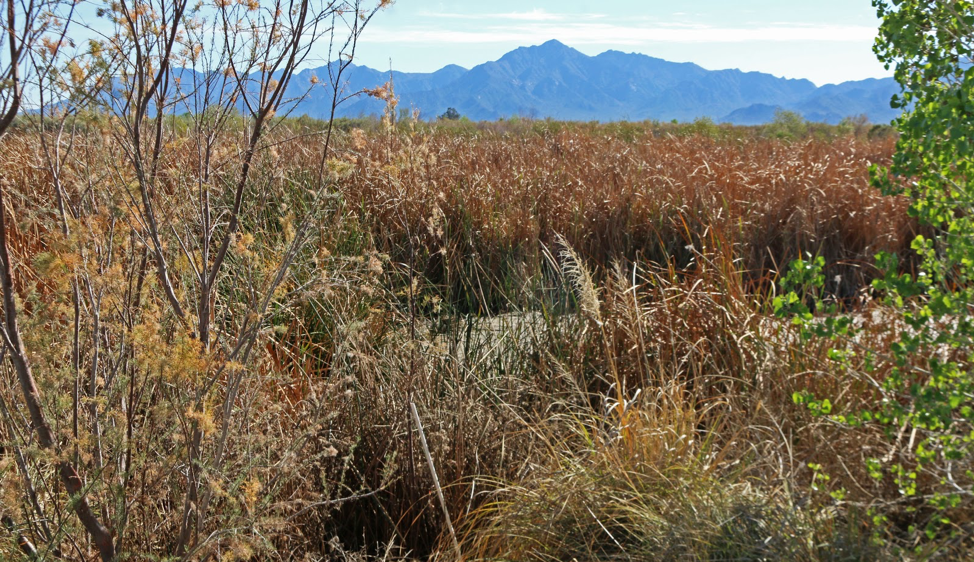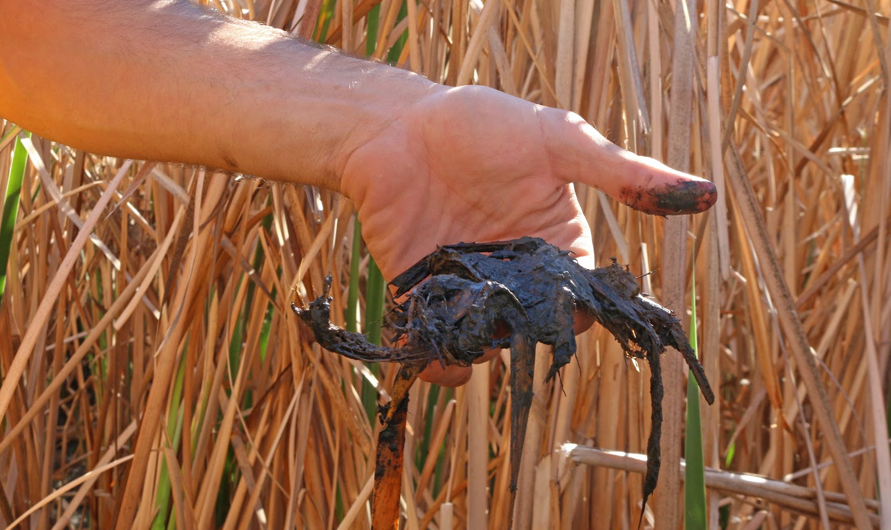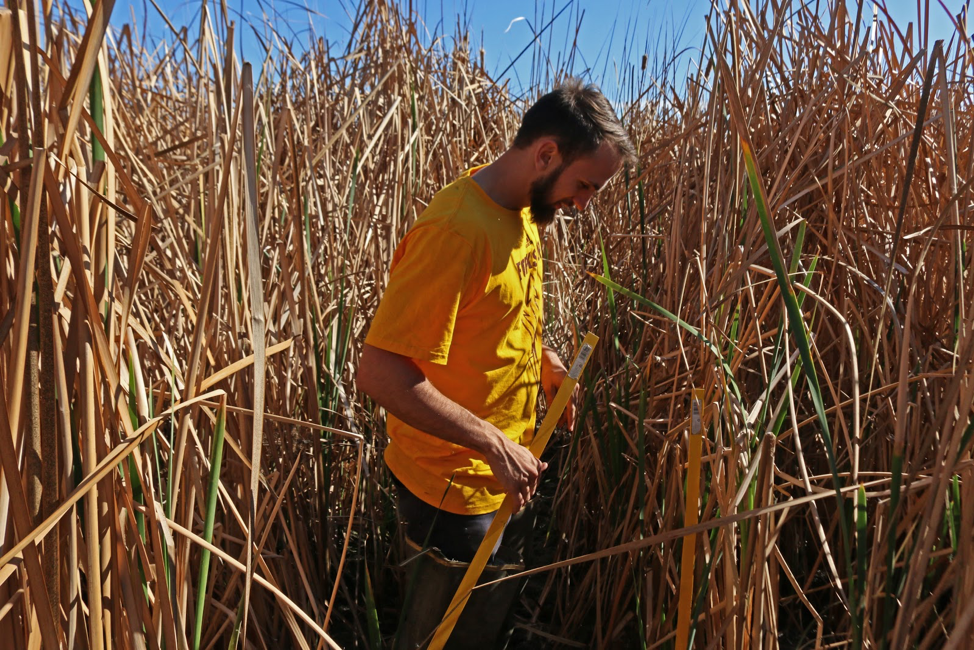
The Tres Rios wetland of Phoenix, Arizona.
Credit: E Zambello/LTER-NCO CC BY 4.0
When you think of Phoenix, Arizona, a lush wetland is probably not the first thing that comes to mind. If you’re like me, you imagine soaring desert mountains dotted with saguaro cactus, a hot valley in colors of stone, now glittering with lights from downtown. Yet, there I was, knee deep in mud in the middle of a cattail marsh in Tres Rios.
I visited Tres Rios with staff from the Central-Arizona Phoenix Long Term Ecological Research site, where researchers advance science and education on urban ecology and urban socio-ecological systems. Earlier that morning I watched a talk on the Tres Rios wetland by Dr. Jorge Ramos, and listened to him describe not only his fieldwork in the cattails, but how these unique, man-made wetlands interact with the landscape as a whole.
Tres Rios, as it exists now, would not be considered “natural,” but remains part of the city’s wastewater system. Reclaimed water is pumped into the restored wetland which is further cleaned by the riparian plants in this 700-acre area near and around the Salt River.
How Do Plants Affect Carbon Balance?
Dr. Ramos wanted to know how plants affect the carbon balance of the Tres Rios Environmental Restoration Project. Wetlands like this are important for their blue carbon potential; carbon is stored as plant material beneath the water, retaining the carbon so that it does not release into the atmosphere as C02, a greenhouse gas and main driver of climate change. Because of this carbon storage capability, wetlands—both their protection and creation—are lauded as important climate control initiatives.

Chris Sanchez shows off some plant matter buried in the marsh mud
Credit: E Zambello/LTER-NCO CC BY 4.0
However, wetlands also give off greenhouses gases in the form of methane (CH4) and nitrous oxide (N2O), and methane traps radiation at more than 20 times the efficiency of carbon dioxide. These compounds come from the water and drying soil, but also from the plants themselves, their stems acting as gas pipes for the soil beneath. Dr. Ramos investigates unanswered questions such as: how much methane and nitrous oxide comes from the plants, and how does that affect the carbon balance of the wetland area?
As I walked behind Chris Sanchez, Lab Manager of the Wetlands Ecosystem Ecology Lab (WEEL) and Research Specialist at the Julie Ann Wrigley Global Institute of Sustainability, my wading boots sank deep into the marsh mud—so deep that I had to use both hands to combat the sucking motion that threatened to cement me there forever. The cattails waved far above my head, puffy seeds periodically released by the breeze and creating snowstorm-like dispersals around our shoulders.
Of course, we weren’t the only living creatures in Tres Rios; the deeper, open-water areas were covered with waterfowl, from Northern Shovelers and Ruddy Ducks to American Coots, Blue-winged Teal and Ruddy Ducks. Herons and egrets stalked prey in the shallows, and a group of American White Pelicans rested on an exposed mudflat. Literally everywhere we looked we found dozens and dozens of birds; over 150 species have been recorded here.
Measuring Methane
To measure how much of the methane and nitrous oxide emerges from the cattails, Dr. Ramos attached what looks like a plastic box on both the top and bottom of the stems. Methane and nitrous oxide is released into the closed box, where data collectors measure the emissions. From the readings Dr. Ramos plugs his flux data into an equation, comparing the carbon stored in the marsh against the methane and nitrous oxide emitted by the soil, water, and plants and collected by other members of the WEEL team.

Chris Sanchez measures cattails in Tres Rios.
Credit: E Zambello/LTER-NCO CC BY 4.0
From my vantage point deep in the marsh, I saw the gold and green of the cattails, the blue of the sky and reflections in the water, as well as the purple silhouettes of mountains in the background landscape. Ecosystems like Tres Rios are critical both for water treatment as well habitat for birds and other creatures, especially in this dry environment. Research like that done by Dr. Ramos and his students focuses on yet another function—the place these wetlands hold in the carbon cycle. Ultimately, their work, will provide key data for climate modeling.










